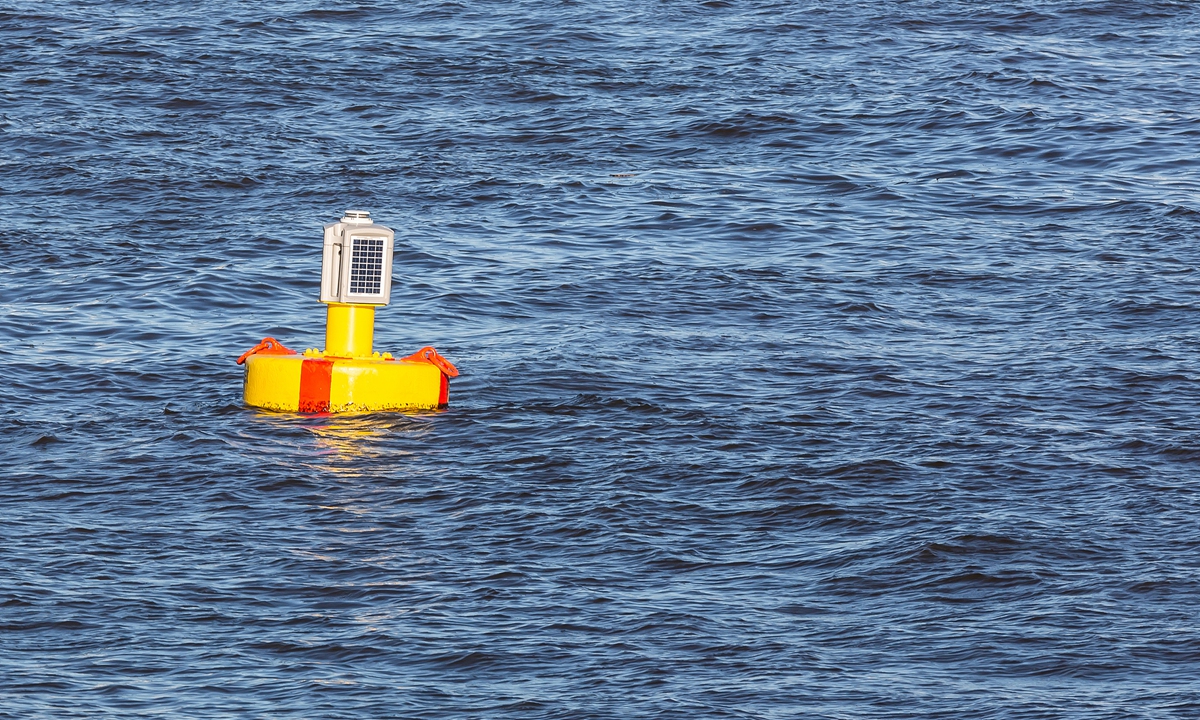Be wary of foreign hostile forces using marine buoys to steal sensitive marine data of China: MSS

Photo: VCG
Some hostile foreign forces are using marine buoys as "spy devices" to gather sensitive oceanic data, attempting to steal sensitive marine data of China. Military, dual-use, and research buoys are commonly used for covert data collection, China's Ministry of State Security (MSS) said in an article released on its official WeChat account on Saturday.
A marine buoy is a type of ocean observation device primarily used to monitor hydrology, water quality, and meteorological data. It provides valuable support for marine scientific research, offshore oil and gas development, and national defense.
Marine buoys come in various forms. They are low-cost, highly mobile, and can be deployed from the air, surface, or underwater. However, some external forces deploy these as "covert sentries" in the deep ocean. The article lists three main categories.
Military marine buoys are integral to a certain country's anti-submarine warfare arsenal, the MSS article said. These buoys come in multiple subtypes and can be deployed individually or combined for specific mission needs. They are widely deployed in target areas through surface ships, anti-submarine helicopters, and anti-submarine patrol aircraft and can operate at depths of hundreds of meters.
Dual-use buoys can serve both military and civilian purposes, distinguished by the precision and sensor types they employ for data collection. Data usage is a key indicator of whether these buoys serve intelligence purposes, according to the MSS.
Research buoys are particularly deceptive, often blending in with normal marine research buoys. Some countries use the guise of international marine monitoring organizations to develop specialized buoys that are mixed with genuine research buoys and deploy them in sensitive marine areas of China under legitimate channels, using a facade of legitimacy to extract data, the ministry revealed.
The MSS notes that identifying espionage capabilities in marine buoys requires specialized oceanographic expertise and detection technology beyond general observation.
To distinguish whether the suspected buoys are for espionage purposes, three critical factors must be considered: source, intended purpose, and data destination, the ministry said.
Safeguarding national security requires extensive public participation. For buoys that cannot be identified or suspected of foreign origin, the public should promptly report via the national security hotline and the online reporting platform, the ministry said.
When conditions permit and personal safety is not at risk, suspicious buoys can be salvaged and safely transferred to state security agencies. These actions are eligible for rewards under national security regulations, according to the MSS.
Global Times


